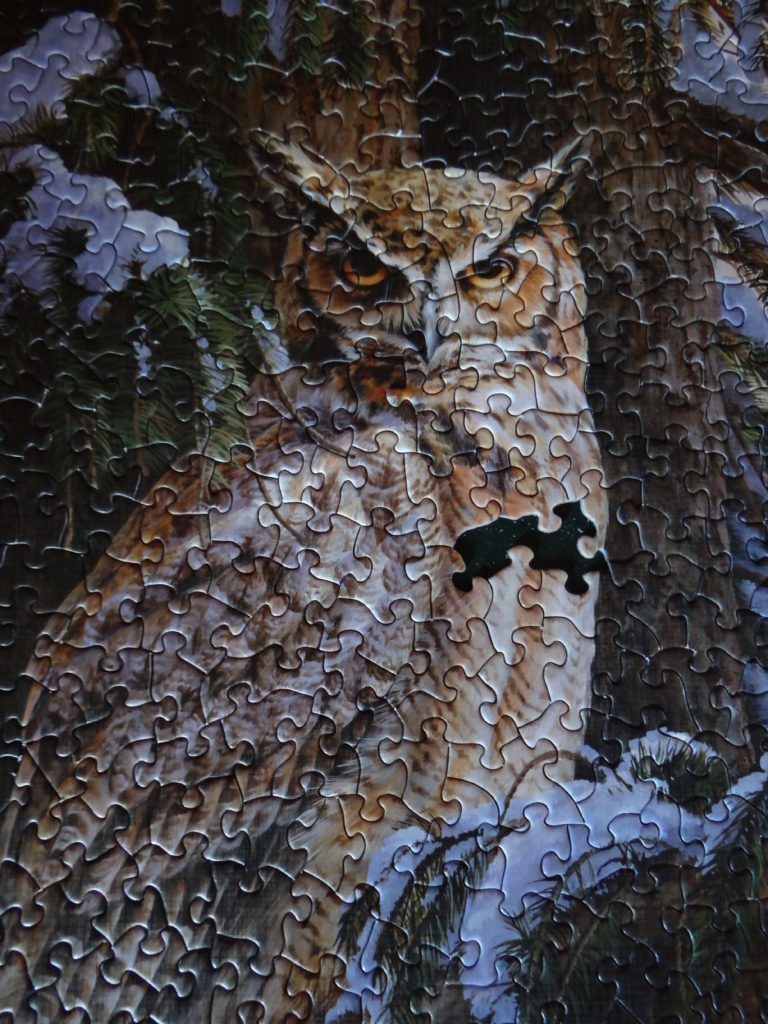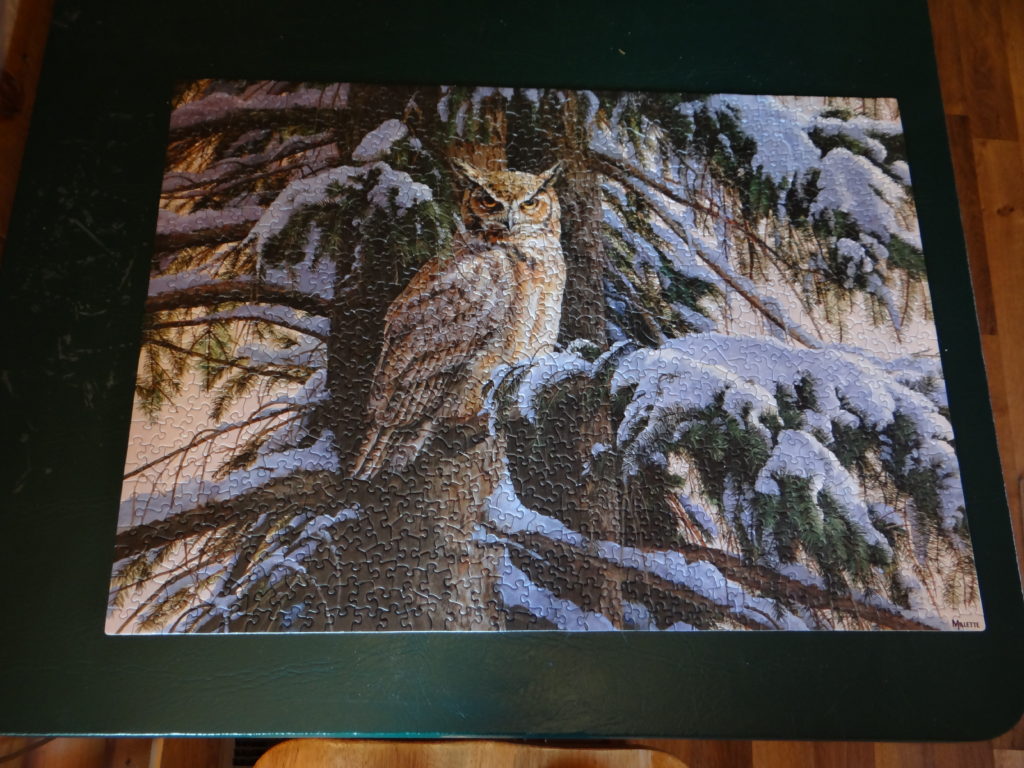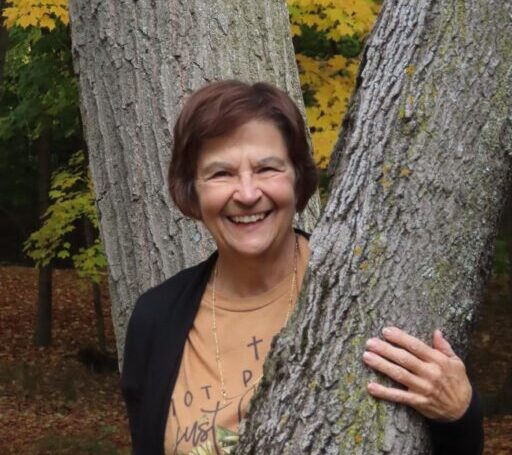Jigsaw puzzles have been around since the 1700’s when John Spilsbury of London fashioned the first one out of wood. They weren’t known as jigsaw puzzles then, but as dissections. It wasn’t until 1880 that they began to be called jigsaw puzzles, but this was a misnomer as they were cut with a fretsaw – a saw not all that much like a jigsaw.
Jigsaw puzzles became very popular during the Great Depression. They provided a cheap, long-lasting, and recyclable form of entertainment. Even today, I would consider jigsaw puzzles as being one of our least expensive forms of leisure activities. But, don’t be fooled by those you see on the shelves at Wal-Mart. In 2005 the most expensive puzzle, to date, was sold for $27,000 at a charitable auction for The Golden Retriever Foundation. The puzzle, created by Rachel Page Elliot, predicted a female Golden Retriever with her five puppies playing in the grass. What a honor that must have been for this 92 year-young woman who hadn’t taken up puzzle making until she was in her seventies.
Besides the sense of accomplishment that’s felt when completing a puzzle, there are possibly other benefits. The Alzheimer Society of Canada proclaims that jigsaw puzzles can help keep the brain active and may reduce the risk of developing Alzheimers.
When I looked at our owl puzzle with the last piece still absent, it came to mind that this is what our lives are like without the most important piece – God. Our life is an unfinished picture when we try to fill it with “things”, but leave God out. Solomon reminds us in Ecclesiastes 3:11, that God has planted eternity in the human heart. We will never be completely satisfied with our earthly pleasures and pursuits if we leave the “most important piece – “the piece of God”- in the box. He has built in us a restless yearning for Him, and no matter how many things we fill our life with, if we turn our backs on God, a void in us goes unfilled and peace escapes us.
Isn’t it wonderful that God discriminates against no one? Anyone can pick up that last piece and put it where it belongs. Because He wants nothing more than for us to have a relationship with Him, you can be assured it will fit perfectly.
Until next month, keep on readin’ and I’ll keep on writin’.



Anonymous
I just re-read this again for a morning devotion, and it blessed me even more than when I read it the first time!
Cathy
What a beautiful puzzle.
Kathy
What interesting and inspiring thoughts!!
I admire anyone that even STARTS a 1000 piece puzzle, let alone finishes it!! Wow — I’m glad the decision was made to save it! What a great reminder of many important concepts!
Thanks for sharing the picture, too. It’s majestic.